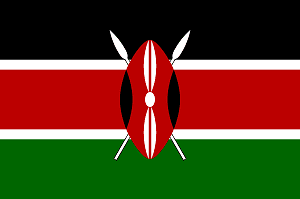Although Kenya’s real GDP grew 5.8% year-on-year (y-o-y) in Q2 2014, according to data released by the Kenya National Bureau of Statistics and reported by Reuters, the country’s freight industry will nevertheless face headwinds in the form of the poor performance of Kenya’s key export sectors over the coming years.
Kenya’s key export sectors will continue to post relatively weak growth over the medium term, exerting a drag on the country’s trade balance, as well as the freight industry. BMI predict that the deficit – and the wider current account deficit – will gradually narrow towards the end of BMI 2014 to 2018 forecast period due to slower import growth. Figures from the Central Bank of Kenya (CBK) indicate that export revenues were, in local currency terms, 3.3% lower in the first six months of 2014 than in the same period in 2013. The falling value of the Kenyan shilling means that shipments fell by 5.0% in BMI dollar terms. The fall in revenue is due to both low levels of agricultural production, and weak tea prices. Government figures show that the volume of coffee exported was 9.2% lower in June 2014 – the latest date for which figures are available – than it was a year earlier. Tea volumes increased by 3.3% over the same period, but revenue still declined due to a 12.5% fall in export prices. In 2015, BMI anticipates the outperformer in terms of modes in Kenya to be air freight, which is forecast to see y-o-y tonnage gains of 8.58%. Growth in the rail and maritime spheres will be more modest this year. Headline Industry Data- 2015 Port of Mombasa tonnage throughput forecast to grow by 5.00%
- 2015 air freight tonnage throughput predicted to rise by 8.58%
- 2015 rail freight tonnage throughput forecast to increase 2.05%
- 2015 total trade set for year-on-year (y-o-y) real-term growth of 0.28%
Upgrade work on the Voi-Taveta road (which is part of the 1,545km Mombasa, Kenya-Bujumbura, Burundi Corridor construction project) has begun, according to a statement by Kenya Industrialisation Cabinet Secretary Adan Mohammed, as reported by the Star. The proposed route will establish an alternate passage from the Kenyan port of Mombasa to Burundi via Tanzania, stated Mohammed. The road will pass through Holili Singida in Tanzania and Kabanga Kobero on the Tanzania-Burundi border to Bujumbura.
A Kenyan freight logistics company is to open a new $10m air cargo terminal adjacent to the apron at Jomo Kenyatta International Airport in Nairobi, Air Cargo World reported in 2014.
The 5 000 Sqm terminal project undertaken by Siginon Aviation comes in the wake of increasing demands for a safe, secure air cargo facility on the airport’s airside. The terminal will boast a general cargo warehouse with an annual throughput of 60,000 tonnes and specialised storage areas for dangerous goods and temperature-sensitive and oversized cargo. The port of Mombasa will continue to play a leading role in EAC supply chains through improved regional connectivity in the form of a Mombasa-Uganda railway line. The new Standard Gauge Railway (SGR) line, to be operated by the China Harbour Engineering Construction Company, will begin at Mombasa, and stretch through Nairobi in Kenya to Kampala in Uganda, at a cost of $8 billion. The project is part of a wider initiative – the Northern Corridor Integration Projects – which will eventually link with Rwanda and South Sudan. Key risks to outlookUpdated GDP figures have not led BMI to significantly revise BMI outlook for the Kenyan economy, but BMI anticipate headwinds to affect the Kenyan freight industry owing to weak export growth over the medium term. Achieving ‘middle-income status’ may increase investor interest in the country over the longer term. The Kenyan National Bureau of Statistics (KNBS) has released an updated measure of Kenya’s GDP. The new figures show that the country’s economy was 25.3% larger in 2013 than had been previously assumed. The new data show that Kenya’s GDP per capita exceeded the World Bank’s ‘middle income’ threshold in 2012; an announcement that may increase Nairobi’s ability to tap global capital markets. Kenya’s wide fiscal and current account deficits are now lower as a proportion of GDP, indicating that macroeconomic imbalances are less severe than had been previously reported. In other news, the Kenyan government signed a Memorandum of Understanding (MoU) with China Communications Construction Company Limited to establish a free trade zone in Mombasa, Bernama reported in August 2014. The link up, which will be Kenya’s first free port, should aid the Kenyan freight industry going forward.








